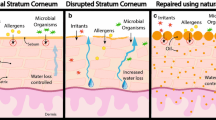Abstract
Human dermal fibroblast is essential in wound healing of the skin through the synthesis of extracellular matrix proteins. With respect to oxidative stress, the effects of remifentanil on human dermal fibroblast have received little attention. Therefore, we investigated the effects of remifentanil on the apoptosis and autophagic reaction of human dermal fibroblasts under oxidative stress. The subjects were divided into the following groups: Control group: cells were incubated at 37°C in a humidified atmosphere with 5% CO2. Hydrogen peroxide (H2O2) group: cells were exposed to H2O2 for 2 h. RPC/H2O2 group: cells were pretreated with remifentanil for 2 h and exposed H2O2 for 2 h. 3-MA/RPC/H2O2 group: cells were pretreated with 3-methyladenine (3-MA) and remifentanil for 1 h and 2 h, respectively. We measured cell viability using MTT assay. Western blot analysis was used to determine the expression levels of proteins associated with apoptosis and autophagy. Quantification of apoptotic cells was performed using flow cytometer analysis, and autophagic vacuoles were observed under a fluorescence microscope. Remifentanil treatment increased the proliferation of human dermal fibroblast and decreased apoptotic cell death, enhancing autophagic activity under oxidative stress. However, 3-MA, the autophagy pathway inhibitor, inhibited the protective effect of remifentanil in oxidative stress. This study demonstrates that remifentanil activated autophagy and decreased apoptotic death of human dermal fibroblasts under oxidative stress. Our results suggest that remifentanil may help in the treatment of oxidative stress.









Similar content being viewed by others
References
Gurtner GC, Werner S, Barrandon Y, Longaker MT. Wound repair and regeneration. Nature. 2008;453:314–21.
Martin P. Wound healing–aiming for perfect skin regeneration. Science. 1997;276:75–81.
Kuehn BM. Chronic wound care guidelines issued. JAMA. 2007;297:938–9.
Meier K, Nanney LB. Emerging new drugs for scar reduction. Expert Opin Emerg Drugs. 2006;11:39–47.
Nohl H. Involvement of free radicals in ageing: a consequence or cause of senescence. Br Med Bull. 1993;49:653–67.
Sies H. Oxidative stress: from basic research to clinical application. Am J Med. 1991;91:31S–8S.
Cerutti PA, Trump BF. Inflammation and oxidative stress in carcinogenesis. Cancer Cells. 1991;3:1–7.
Andriani F, Margulis A, Lin N, Griffey S, Garlick JA. Analysis of microenvironmental factors contributing to basement membrane assembly and normalized epidermal phenotype. J Invest Dermatol. 2003;120:923–31.
Chmielowiec J, Borowiak M, Morkel M, Stradal T, Munz B, Werner S, et al. c-Met is essential for wound healing in the skin. J Cell Biol. 2007;177:151–62.
Smola H, Thiekotter G, Fusenig NE. Mutual induction of growth factor gene expression by epidermal-dermal cell interaction. J Cell Biol. 1993;122:417–29.
Chen Q, Ames BN. Senescence-like growth arrest induced by hydrogen peroxide in human diploid fibroblast F65 cells. Proc Natl Acad Sci USA. 1994;91:4130–4.
Dumont P, Burton M, Chen QM, Gonos ES, Frippiat C, Mazarati JB, et al. Induction of replicative senescence biomarkers by sublethal oxidative stresses in normal human fibroblast. Free Radic Biol Med. 2000;28:361–73.
Levine B, Kroemer G. Autophagy in the pathogenesis of disease. Cell. 2008;132:27–42.
Mizushima N. Autophagy: process and function. Genes Dev. 2007;21:2861–73.
Nakatogawa H, Suzuki K, Kamada Y, Ohsumi Y. Dynamics and diversity in autophagy mechanisms: lessons from yeast. Nat Rev Mol Cell Biol. 2009;10:458–67.
Zongze Z, Jia Z, Chang C, Kai C, Yanlin W. Protective effects of remifentanil on septic mice. Mol Biol Rep. 2010;37:2803–8.
van Engeland M, Nieland LJ, Ramaekers FC, Schutte B, Reutelingsperger CP. Annexin V-affinity assay: a review on an apoptosis detection system based on phosphatidylserine exposure. Cytometry. 1998;31:1–9.
Rieger AM, Nelson KL, Konowalchuk JD, Barreda DR. Modified annexin V/propidium iodide apoptosis assay for accurate assessment of cell death. J Vis Exp. 2011. doi:10.3791/2597.
Wu YT, Tan HL, Shui G, Bauvy C, Huang Q, Wenk MR, et al. Dual role of 3-methyladenine in modulation of autophagy via different temporal patterns of inhibition on class I and III phosphoinositide 3-kinase. J Biol Chem. 2010;285:10850–61.
Cepero E, King AM, Coffey LM, Perez RG, Boise LH. Caspase-9 and effector caspases have sequential and distinct effects on mitochondria. Oncogene. 2005;24:6354–66.
Lakhani SA, Masud A, Kuida K, Porter GA Jr, Booth CJ, Mehal WZ, et al. Caspases 3 and 7: key mediators of mitochondrial events of apoptosis. Science. 2006;311:847–51.
Sedlak TW, Oltvai ZN, Yang E, Wang K, Boise LH, Thompson CB, et al. Multiple Bcl-2 family members demonstrate selective dimerizations with Bax. Proc Natl Acad Sci USA. 1995;92:7834–8.
Acknowledgements
This study was supported by Research institute for Convergence of biomedical science and technology (30-2013-002), Pusan National University Yangsan Hospital.
Author information
Authors and Affiliations
Corresponding author
Ethics declarations
Conflict of interest
The authors have no financial conflicts of interest.
Ethical statement
There are no animal experiments carried out for this article.
Rights and permissions
About this article
Cite this article
Yoon, JY., Park, CG., Park, BS. et al. Effects of Remifentanil Preconditioning Attenuating Oxidative Stress in Human Dermal Fibroblast. Tissue Eng Regen Med 14, 133–141 (2017). https://doi.org/10.1007/s13770-017-0030-9
Received:
Revised:
Accepted:
Published:
Issue Date:
DOI: https://doi.org/10.1007/s13770-017-0030-9




